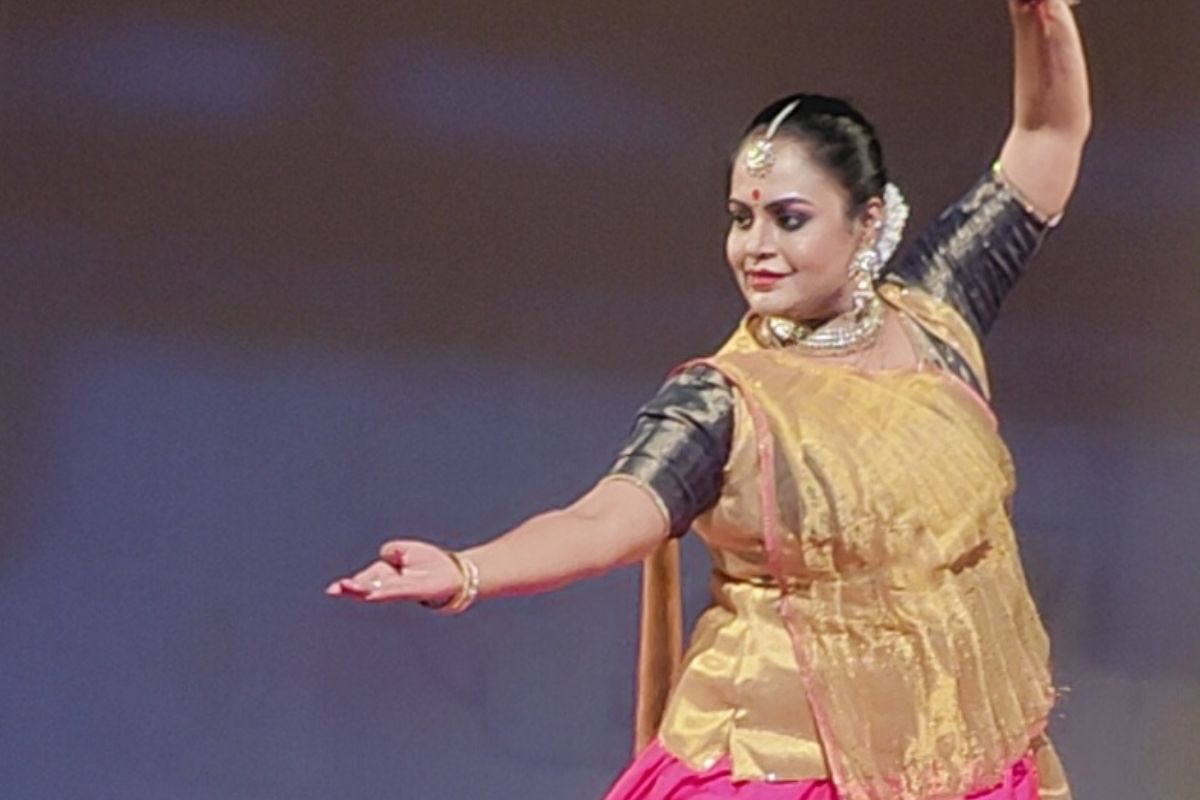Jackson Wang drops fiery new single ‘GBAD’ – An anthem of self-liberation
Jackson Wang is back with a bang! His latest track, 'GBAD', is more than just a song—it’s a statement
It was the Bengali New Year, and Naatmandir was celebrating the culmination of spring and summer through their homage to nature and universal creativity at the Rathindra Mancha Auditorium in Jorasanko Thakurbari.
SNIGDHA GOSWAMI | Kolkata | May 3, 2024 1:39 pm

File Photo
Watching this event organised by the Natmandir Institution of Salt Lake was like experiencing one’s inner spring on the first day of Baisakh. It was the Bengali New Year, and Naatmandir was celebrating the culmination of spring and summer through their homage to nature and universal creativity at the Rathindra Mancha Auditorium in Jorasanko Thakurbari.
During the programme, Anurekha Ghosh, the choreographer and founder of the institute, paid tribute to the memory of her mother, Swapna Ghosh, who remains her inspiration. A talented singer and competent dancer, Anurekha is the seniormost student of Guru Vidushi Durga Arya in Kathak and also an ardent student of the renowned Swagatalakshmi Dasgupta of Rabindrasangeet.
Advertisement
The amazing programme began with the spiritual rendering of Annada Thakur’s Durga Stotra recited melodiously by Rahul Mitra Mustafi, another able student of Swagatalakshmi. Among quite a few enticing presentations of Tagore songs, Mustafi completed his recital with a rare kirtan penned by Tagore. This one was special as it belongs to the 190 songs for which Tagore had not composed the notation (Swaralipi). Mustafi proudly mentioned that Swagatalakshmi has created the notations for this kirtan, which speaks about the imbedded ego of human beings.
Advertisement
The dance presentations after this inaugural song session were dedicated to nature, ushering in Baisakh, and the festivities associated with this season that symbolise warmth, fresh beginnings, and new initiatives. In Tagore’s words, our inner strength is rejuvenated; sorrow, pain, and sickness are demolished through joy, piety and truth (Anando, Mangal and Satya). The spontaneous and graceful movements of each participant proved the mastery of the choreographer, Anurekha Ghosh, who is also well versed in Kalaripayattu, the martial art form of Kerala. She presented a few solo and duet numbers with grace and complete mastery over each dance form as well.
This was followed by Barsha Baran and then a dance choreography dedicated to the memorable old Hindi and Bengali songs immortalised by Geeta Dutt, Lata Mangeshkar and Asha Bhonsle, aptly titled ‘Phire Dekha’. This was an overwhelming presentation by the students, Anurekha herself and none other than her Guru Vidushi Durga Arya,one of the torchbearers of the Lucknow gharana of Kathak and a devoted disciple of Pandit Birju Maharaj. In the duet numbers, they paired perfectly with their male dance partners, Souvik Chakraborty, Debojit Mukherjee and Vignesh Acharya.
“Katha kahe so Kathak kahave” was the title—pure Kathak with all its technical intricacies like tatkaar, thaat, tehais, uthan, chakkars, sawal jabab, thumri and finally kajri were presented perfectly and most gracefully by both Guru Vidushi Durga Arya and her meritorious shishya, Anurekha Ghosh. Like her Guru, Anurekha too has toured the world with her dance presentations, including in the US, UK and even Pakistan. Young students learning from both Durga and Anurekha showcased their learning through a brief presentation of pure Kathak, which clearly highlighted the authenticity of the Guru and the dedication and sincerity of the students. The spins, the speed, the flexibility and the creative energy of Durga Arya defy age and all barriers to bring out the perfect postures, expressions and nuances of kathak.
The accompanists, Prateek Mukherjee on tabla, Shri Chandrachur Bhattacharya on the sitar, and Deepavali Dutta, the vocalist, were perfect in rendering their valuable support to make this programme extremely enjoyable for connoisseurs of Indian dance and music.
The writer is a trained kathak dancer and freelance contributor
Advertisement
Jackson Wang is back with a bang! His latest track, 'GBAD', is more than just a song—it’s a statement
However, he crossed the line when he instructed a police constable in uniform to dance to a song, warning that he would be suspended if he refused.
The ‘Classical Voice of India’ contest strives to make all the young and old practitioners of raag-sangeet aware of the real persona of each raga they choose to present.
Advertisement
